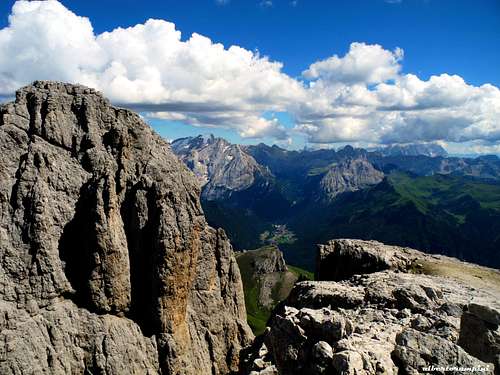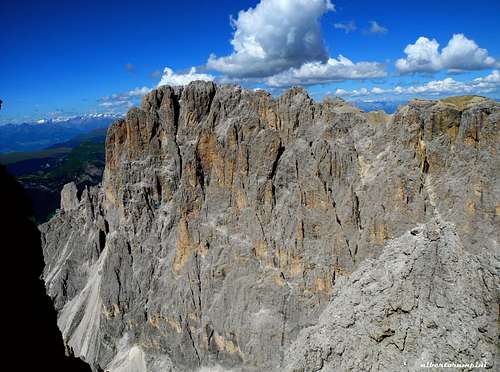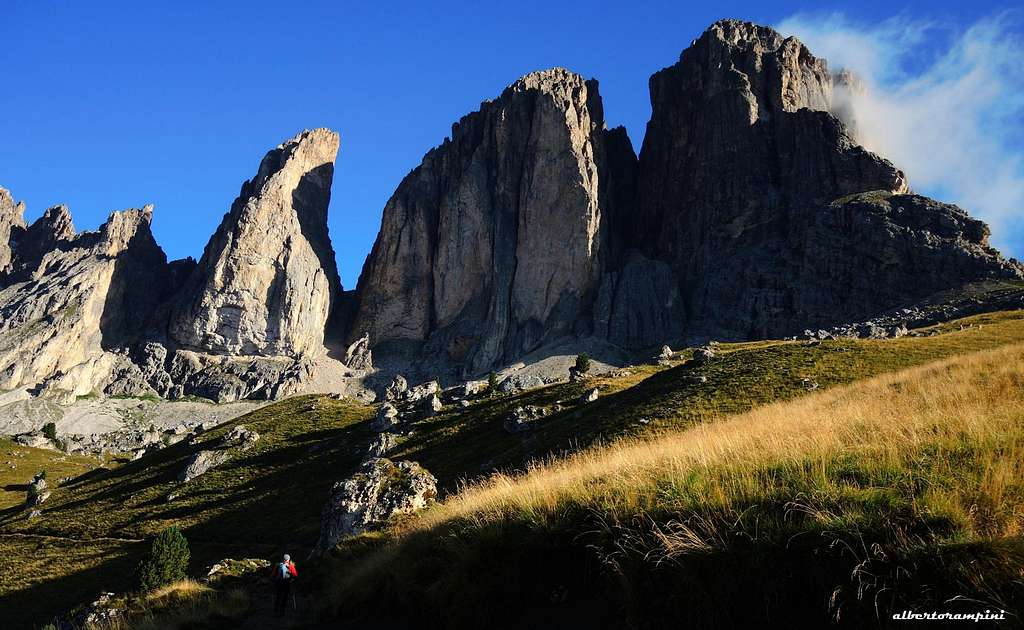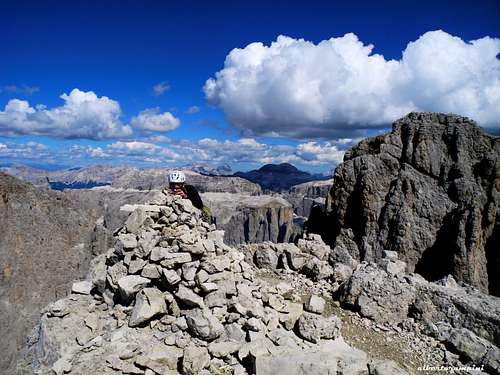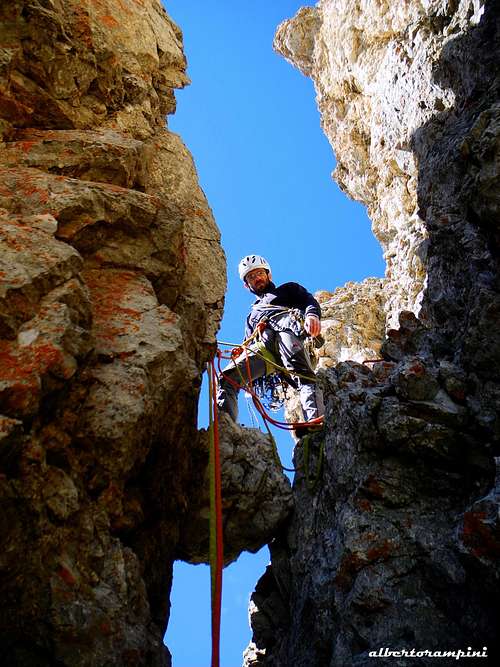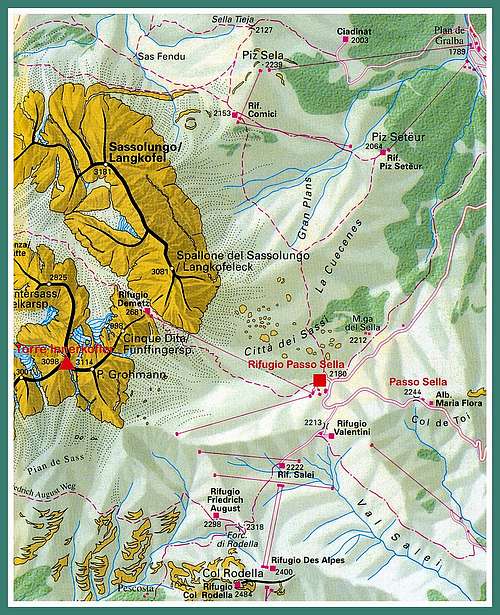-
 14175 Hits
14175 Hits
-
 87.31% Score
87.31% Score
-
 24 Votes
24 Votes
|
|
Mountain/Rock |
|---|---|
|
|
46.50978°N / 11.72752°E |
|
|
Trentino/Alto Adige, Sassolungo group |
|
|
Trad Climbing |
|
|
Summer |
|
|
10164 ft / 3098 m |
|
|
Overview
Geographical classification: Eastern Alps > Dolomites > Sassolungo > Torre Innerkofler
Torre Innerkofler 3098 m
Torre Innerkofler 3098 m is part of the Sassolungo massif, which rises isolated between Val Gardena (Bolzano province) to the North and Val di Fassa (Trento province) to the South. This mighty tower of dolomite is situated between the massive Punta Grohmann and Dente del Sassolungo; looking from P.so Sella it is hidden just behind Punta Grohmann. The tower has been dedicated to the great alpine guide Michael Innerkofler from Sesto, who summited the tower in first solo ascent in the year 1880, August, along the East ridge. Torre Innerkofler is called Innerkoflerturm in German and sometimes it's possible to find Punta Pian del Sass (in italian) on some maps, but I never heard anybody calling it in this way.
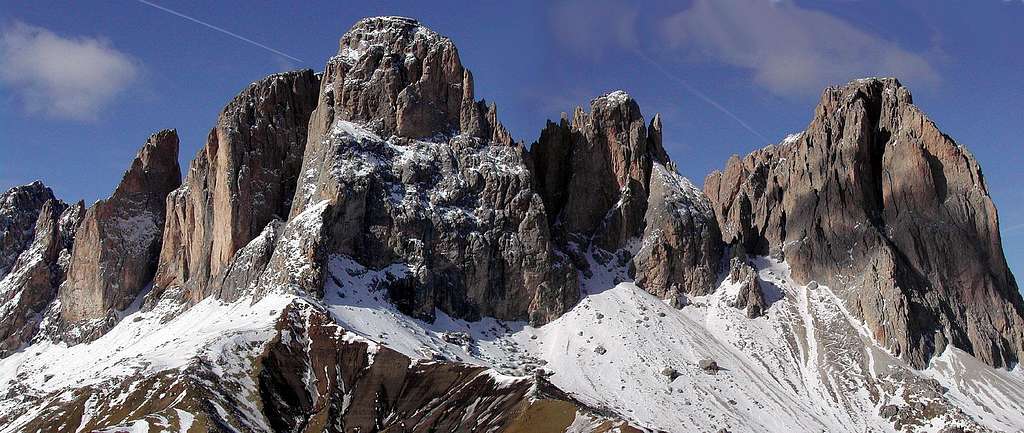
Notwithstanding it's a summit with a significant importance, Torre Innerkofler is not particularly popular, despite the rich choice of several extraordinary routes running through each side and with varying committment and difficulty. Torre Innerkofler appears like a kind of pyramid with the 4 faces oriented N, S, E, W. The summit is a huge balcony and one of its summit ridges connects the Innerkofler with the Dantersass peak (another summit of the Sassolungo group). The steep yellowish South face oversees Val di Fassa with a 500 m. high face cut by three big chimneys. Forcella Grohmann separates Torre Innerkofler from Punta Grohmann, while Forcella del Dente (towards East) separates Torre Innerkofler from the Dente. These "forcelle" (small passes) are quite high (over 2500 m) and steep and are frequently covered by snow, even in summertime.
As told there are a lot of great routes, but this summit is very rarely climbed, when compared with other fashion peaks of the Dolomites. The reason? It's a wild peak, the approach here is long, the routes have not so many pegs in place, the snow persists in the gullies even in summer and the descent is complex and not so easy to find...anyhow Torre Innerkofler has a wild beauty and the climb gives you feelings of high satisfaction!
- It is also possible to reach the top from the summit of Cima Dantersass through a ridge. Anyway I suggest not to use this way, because the ascent of Cima Dantersass is quite dangerous due to the quality of the rock.
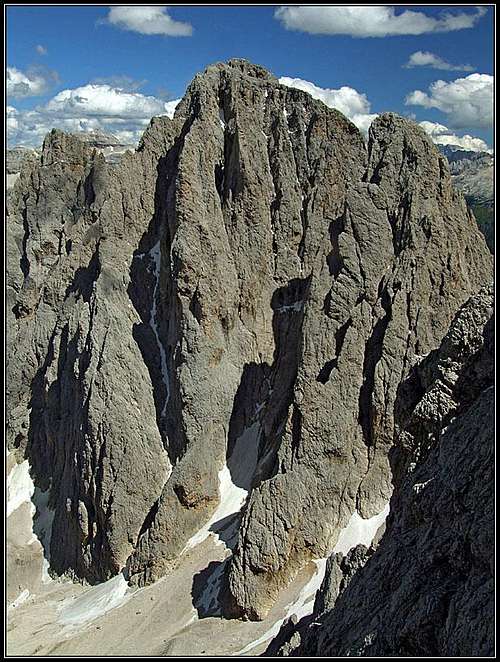
|
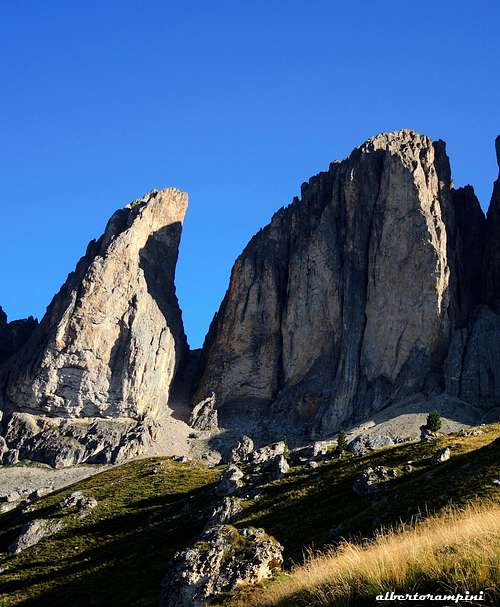
|
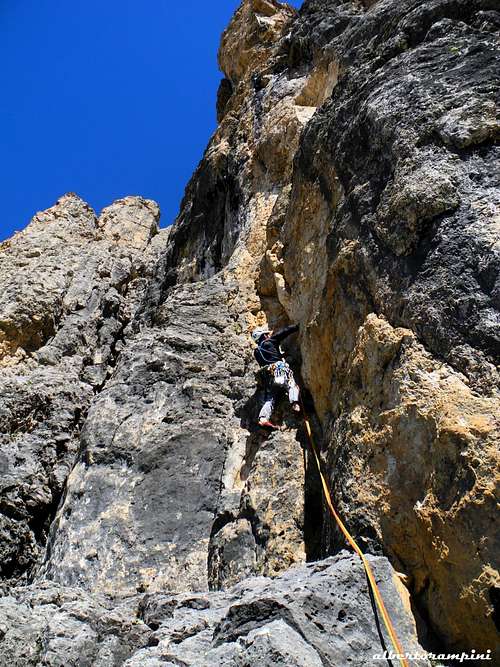
|

Getting There
P.so Sella is the natural base for Torre Innerkofler.Main routes
There are many climbing routes on Torre Innerkofler. A brief list of the routes more frequently climbed is:
Descent - Be aware, the descent is not quite easy to find! From the top follow the southwestern debris to SW (cairns), downclimb along a little spur, reaching a first anchor: abseil 20 m. long. Downclimb along the gully, then traverse right (cairns), bypass around a rocky outcrop, continue downhill always to right (at a junction head to the right), reaching a second anchor: abseil 25 m. long. Follow the gully, gettin the third anchor (outcrop): 25 m abseil (easy, it's possible to downclimb instead od rappelling). Downclimb along a ramp leftward (cairns), then follow a steep ridge to another anchor, from which with a 50 m. abseil (possible 2 abseil, an intermediate anchor) you reach the fork between Innerkofler and Dente at 2772 m. Down the unpleasant scree gully, getting the base of the walls on the path that leads towards Punta Grohmann and Passo Sella (about 3 hours from the summit to Rifugio Passo Sella).
Red Tape
No restrictions, you can park the car at P.so Sella (both free and paying parking) or you can park on a little road close to Valentini hut. Consider that there are buses that connects regularly Passo Sella with Selva di Val Gardena and Canazei in Val di Fassa. The only problem is that usually these buses stop the service in the late afternoon.
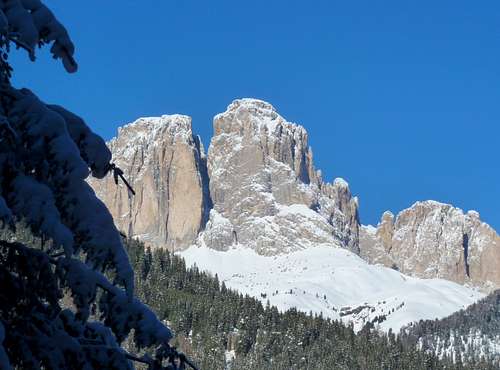
|
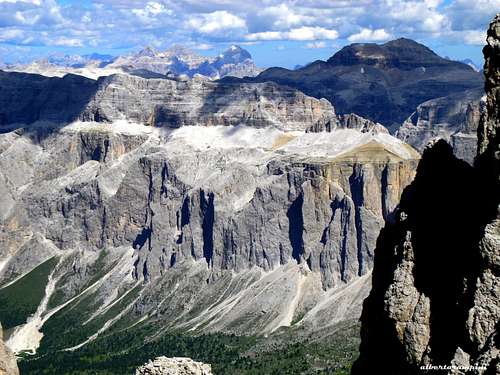
|
Where to stay
The closest campings are in S. Cassiano and Corvara (Badia) and Val di Fassa. There are a lot of hotels/huts nearby. In particular the main huts are:

Guidebooks and maps
“Sassolungo” by Ivo Rabanser - Collana Guide dei Monti d’Italia, CAI TCI - Maps Tabacco 05 Val Gardena 1:25.000 Tabacco 06 Val di Fassa 1:25.000External Links
- Val Gardena site Official site of Val Gardena. Contains useful info on the weather forecast, hotels, lodging, shops, mountain guides and so on.


